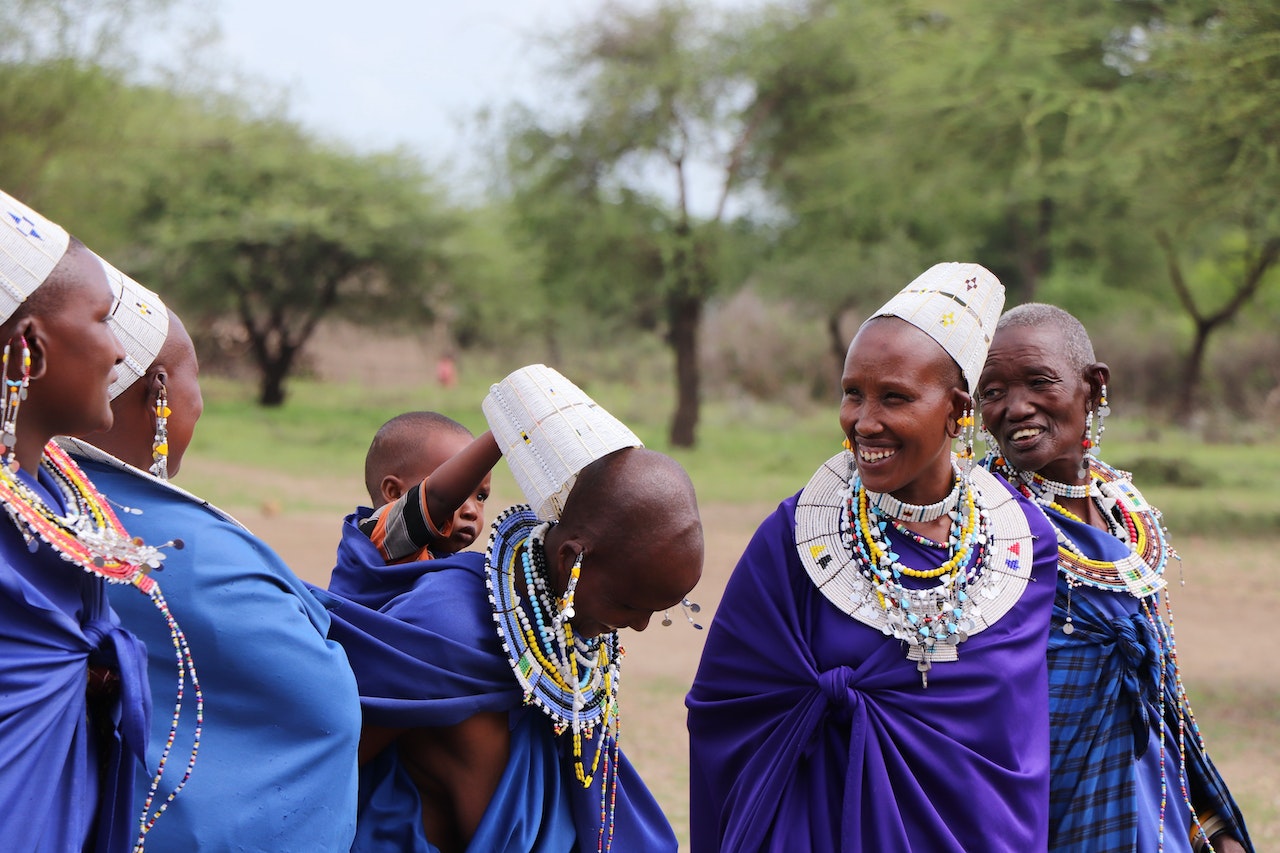Africa is mostly associated with sunsets, safaris and magnificent animals, but there is more to the second largest continent in the world; it plays host to countless inventions like the ishanggi bone a mathematical object numbers, the Egyptian pyramids a wonder of architecture and yes Jollof rice.
But that’s not all; Africa is also home to ancient wisdom comparable to the likes of Greek philosophy and roman sophistry. These sayings stem from a unique understanding of life possessed by the African people who utilized these statements for educating and mastering challenges around them.
In this article we discuss 10 of these ancient African sayings as they apply to the world of graphic design and tips on how to achieve them in present day setting.
Get ready to be amazed by the depth of wisdom in the African motherland. Read below for 7 African sayings guaranteed to make you a successful designer.
7 African sayings guaranteed to make you a successful designer.
- Yoruba (Nigeria): “Ile la ti nko eso, eso la ti nko ile.” (The home is where I learn design, and design is where I learn home.)
- Swahili (East Africa): “Mvumilivu hula bivu.” (The patient one eats ripe fruit.)
- Akan/Twi (Ghana): “Ɔkra ne nte ase.” (The crab and the beetle are cousins.)
- Amharic (Ethiopia): “Bilagnina yetekema, yetelut aytakema.” (A burnt child dreads fire, but a burnt designer learns from it.)
- Shona (Zimbabwe): “Chakafukidza dzimba matenga.” (What decorates the home are the curtains.)
- Wolof (Senegal): “Ndanka mi, njëkk mi.” (The one who is present is the one who succeeds.)
- Igbo (Nigeria): “Ejighi onye nwuru anwu afo.” (No one becomes learned by merely watching.)
1.Yoruba (Nigeria): “Ile la ti nko eso, eso la ti nko ile.”
Image Credit: pexels-roger
Translation: “The home is where I learn design, and design is where I learn home.”
The proverb emphasizes discovering creativity in your surroundings stating that this isn’t something you seek out far and wide but discover in the most common of all places – the home or better still your immediate surroundings.
Value: In today’s world designers are often plagued with creative blocks, finding it difficult to craft new ideas. This can be tied to excessive work hours but the inability to join the dots around us.
“Ile la ti nko eso, eso la ti nko ile” reminds us about these dots, encouraging us to seek them out. It also in its own way emphasizes alertness, clearly stating that our surroundings first and foremost are our biggest sources of inspiration.
How to achieve:
- Create a design inspiration board at home.
- Surround yourself with visual elements that inspire you.
- Display images, colors, textures, and objects that resonate with your design style. inspiration board at home:
- Stay present to naturally occurring shapes and patterns around you
2. Swahili (East Africa): “Mvumilivu hula bivu.”
Translation: “The patient one eats ripe fruit.”
Meaning: The importance of patience, taking small steps not huge ones to achieve a goal and refining core skills.
Value: social media, presents designers with a world of success stories many seek to recreate.
It’s easy for designers to get lost attempting to replicate these, while needed core skills like communication skills or pressure thresholds are ignored.
As a result designers are often unprepared for the real world and easily break. “Designers are often great on social media with their mockups butdon’t stand the test when real work is concerned” Says laolu Obende founder of creative studio Levitate. “When the real work comes, they buckle and often under deliver. “
“Mvumilivu hula bivu.” commands a step-by-step approach to learning the ropes not jumping them, Utilizing this power graphic designers view what’s necessary for the next level and strive to achieve this with tangible wins as the result.
How to achieve
- Embrace the design process.
- Allow ideas to evolve and iterate on designs.
- Give yourself ample time to experiment and refine your work.
- Work with mentors for objective growth reports
Image Credit : pexels-follow-alice
3.Akan/Twi (Ghana): “Ɔkra ne nte ase.”
Translation: “The crab and the beetle are cousins.”
Meaning: This proverb emphasizes the value of diversity and collaboration in design. It reminds designers that different design approaches and perspectives can complement each other and lead to innovative solutions.
Value: Ever worked on a multi -faceted project? Chances are you worked with creatives from several disciplines. “Akan/Twi (Ghana): “Ɔkra ne nte ase.” forces us to acknowledge the need to collaborate particularly when diverse skills are required.
It pushes today’s designers to view creatives from other fields as related parts working as a whole(cousins) despite the differences in their craft.
Collaboration skills aren’t just a personal trait to make yourself feel good, it’s now widely demanded by employees, in view of remote working, where diverse skills and peoples are brought together.
How to achieve
- Collaborate with designers and creatives from diverse backgrounds.
- Seek feedback and engage in design communities.
- Incorporate diverse perspectives into your work.
- Stay open minded when working in diverse environments
4.Amharic (Ethiopia): “Bilagnina yetekema, yetelut aytakema.
Image Credit: pexels-richard-badejo
Translation: “A burnt child dreads fire, but a burnt designer learns from it.”
Meaning: This proverb emphasizes the importance of learning from past mistakes and experiences.
Value: Mistakes are awful says knut overby one of the authors of the Frontier article “Learning From Mistakes: How Does the Brain Handle Errors?” It’s the bad feeling we feel when a dart misses it’s mark or we get an F on a test says fellow author Rene J.Hustler.
The ancient Tanzanian proverbs however describes mistakes as a spring board to designers since they learn from this.
In practice a designer with a missed deadline learns time management and an underpaid designer learns negotiation skills.
How to achieve
- Embrace a growth mindset.
- Reflect on past projects and identify areas for improvement.
- Experiment with new design techniques and styles.
- Learn to avoid the perfectionist monster
Image credit: pexels-valerie-sutton
5. Shona (Zimbabwe): “Chakafukidza dzimba matenga.“
Translation: “What decorates the home are the curtains.”
Meaning: Even the smallest details and elements can have a significant impact on the overall design.
In graphic design detail blends together to create a cohesive whole. From fonts to icons to colors and pattern nothing is applied without considering its impact on the whole.
The same holds true for the Shona, to these ancient peoples curtains (small elements) make up a house hold emphasizes the huge impact little details can bring forth. It’s a nod to pay attention to every aspect of a design for a cohesive and visually appealing effect.
How to achieve
- Pay attention to typography, color choices, spacing, and composition.
- Ensure consistency and coherence in your designs.
- Carefully consider how each element contributes to the overall aesthetic.
- Embrace the principles of minimalism.
6. Wolof (Senegal): “Ndanka mi, njëkk mi.”
Translation: “The one who is present is the one who succeeds.”
Meaning: This proverb emphasizes the importance of active engagement and participation in the design process. It encourages designers to be fully present and invested in their work to achieve successful outcomes.
Value: Heard about the numerous competitions held in the NGD universe? The wolofs are advising you to participate in all. They belief engagement is the key to your success!
Asides engagement, “Ndanka mi, njëkk mi.” speaks on mindfulness the mental exercise capable of achieving desired work-place results. According to the wolofs, staying aware of the design process is the best guarantee of success where work is concerned.
How to achieve
- Actively seek out opportunities to learn and grow in your field.
- Attend workshops, webinars, conferences, and networking events to expand your knowledge and connect with other designers.
- Cultivate a mindset of focus and attentiveness while working on your designs.
- Avoid distractions and create a dedicated workspace that allows you to immerse yourself in your design process.
7. Igbo (Nigeria): “Ejighi onye nwuru anwu afo.
” Translation: “No one becomes learned by merely watching.”
Meaning: This proverb emphasizes the importance of active participation and continuous learning.
Value: The NGD universe hold competitions weekly for entry level and pro designers. It’s as if we are aware of the ancient Igbo’s advice to learn by practicing, or putting creative skills to the test.
“No one becomes learned by merely watching” so in practice abandon the tutorial rabbit hole i.e countless streaming of how-to videos and get to actual work.
Do this through personal project, client based ones or collaborations.
The value of the igbo proverb itself to the design community is growth, growth to your design muscles when you flex them and to one’s self esteem.
How to achieve
- Put your knowledge into practice by working on design projects, personal or self-initiated.
- Experiment with different design styles, techniques, and tools to gain hands-on experience and build your portfolio.
- Seek constructive feedback from peers or mentors to further improve your skills and refine your design approach.
- Embrace a growth mindset:
Let the Motherland Guide your Growth
Image credit: pexels-daniel-tijesuni
Barack Obama in “Dreams from my Father” mentioned the immense impact African wisdom played in his life. Other notable personalities like Desmond Tutu, Maya Angelou, Nelson Mandela also acknowledge the wisdom of African proverbs and used this to catapult their growth.
In today’s world designers are faced with varying challenges and while there are resources to overcome these difficulties there is also an immense wealth of wisdom you can draw from right from the home soil.
The 7 proverbs stated here are guaranteed to help you become better in the art of design. They may not have emerged in the present century but their wisdom when applied is a sure path to standing out in today’s world. Use them!










